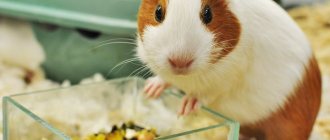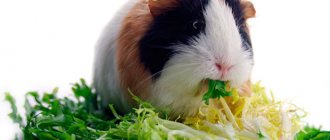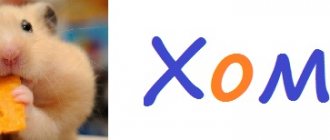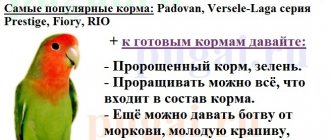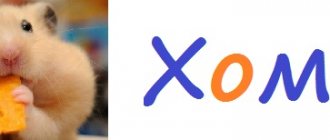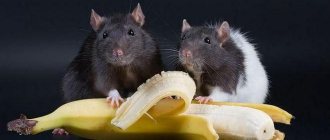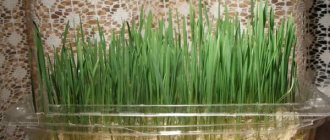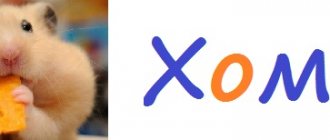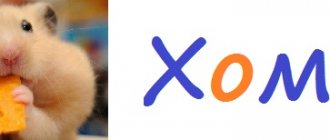- home
- Guinea pig
- Guinea pig nutrition
03/11/2019 Food of plant origin is ideal for feeding rodents, guinea pigs are no exception. However, even the healthiest foods, if not fed properly, can cause harm to your pet’s body. Cucumbers and tomatoes are the most popular vegetables, especially in the summer season, and many owners wonder whether they can be given to their pet? Obviously, they can bring a lot of benefits to the guinea pig's body, but you should follow the precautions when feeding.
How to feed vegetables
To provide your pet with all the necessary vitamins and microelements, you need to include fresh vegetables and fruits in its diet. They should be given in small quantities, about 80-120 grams per day, washed thoroughly before feeding and cut into pieces, but not grated. The pieces should be small so that the pig can eat them completely. Uneaten pieces must be immediately removed from the cage and thrown away, preventing them from rotting. Spoiled and rotten food should not be fed to guinea pigs.
It is best to use products grown in your own garden or garden. But if you don’t have your own plot of land or cottage, then it is advisable to buy vegetables, herbs and fruits in season, avoiding products grown with the use of pesticides and treated with various drugs.
Let's figure out what vegetables guinea pigs can eat and how they are good for your pets.
Can guinea pigs have zucchini?
Most pigs eat zucchini on both cheeks! Zucchini and zucchini are the best vegetables for pigs.
The most important thing to know about guinea pigs is their diet. Everything else is forgivable. If you forget to remove the cage, nothing bad will happen. Not going for an extra walk is also not scary. But by including prohibited foods in your diet, you can seriously ruin your pet’s health. Starting small, regular milk. It would seem, who could it harm? But when reaching the age of 1-2 months, the pet loses the ability to digest it.
cucumbers
Most often, owners are interested in whether guinea pigs can eat cucumbers. These vegetables contain 2-6% dry matter - sugars, fiber, protein, some vitamins and microelements. 94-98% of the total mass of a cucumber is water, so this vegetable has little nutritional value. But, despite this, cucumber helps the rodent’s body digest other foods and absorb fats. You can give cucumbers to guinea pigs in small quantities and, preferably, your own, since poisoning often occurs due to the nitrates contained in purchased cucumbers. Overfeeding cucumbers can lead to digestive problems.
Are apples acceptable in the diet?
For these animals, apples are a delicacy along with pears and cucumbers. The type of apples doesn't really matter. But you should try to take into account at least the amount of sugars contained in the fruit. A lot of sweets in the diet is harmful for both people and guinea pigs. Apples are best given to your pig in the evening along with other types of food. This method contributes to the better appearance of the animal.
If we talk about the preferences of guinea pigs, then the animals themselves prefer sweet varieties of apples. If the apples are dried, then before serving it is recommended to soak them in water for 3 hours before treating your pet. Spoiled and rotten fruits should not be given to the pig. In addition to the fruits of the apple tree, as well as the branches, they are suitable for food consumption. The fruits can be fed both dry and raw.
The fruits contain useful substances such as:
- fiber with fructose;
- pectin;
- vitamins of group B and other important structures;
- a number of useful minerals.
Many owners cut apples before serving, but the best way to serve them is to serve them whole.
If the owner decides to cut the apples, it is important to remove all the seeds. They contain acid, which, when dissolved in the stomach, can become dangerous for a pet.
According to recent studies, the poison of even one berry is enough to kill a pet.
The available dietary fiber helps in overall cleansing of the body. Despite the fact that apples should be included in the regular diet, if you take into account the answers from experienced breeders, the benefits of fruits can be increased significantly:
- The apple fruit must be washed thoroughly and cut into small pieces;
- make sure there is no mold on the fruit;
- leave the seeds;
- the fruit should be moderately ripe, but not too juicy. Fibers that are too soft do not have the best effect on the condition of the animal’s incisors and muzzle. If the muzzle is very dirty, such an environment can become ideal for the growth of bacteria;
- It is not recommended to give sour fruits. The acids contained in the fruit can negatively affect the functioning of the gastrointestinal tract.
It is forbidden to give pieces of compote. The mass will turn sour in the stomach, it will not be digested, resulting in poisoning. Experienced breeders advise giving apples to your pet in the first half of the day. Unlike hamsters, animals eat less often at night and fiber may be less absorbed.
One serving should contain no more than 3 apple slices; it is advisable to treat your pig with a treat no more than 2 times a week. Due to the large amount of sugars, apples can cause obesity in large quantities.
Tomatoes
Can guinea pigs eat tomatoes? These vegetables contain vitamins A and C, macro- and microelements, pectins and organic acids. Pets can only eat ripe vegetables, since green ones contain solanine, a toxic substance that is destroyed when tomatoes ripen. Pigs should not have green parts of tomatoes - tops and leaves. Tomatoes should be fed in small quantities and only from your garden. Overfeeding tomatoes can cause diarrhea.
Grain feed
A guinea pig needs to eat at least 20% grain per day. Grain food for rodents is sold in any pet store. The finished product usually includes:
- barley;
- oats;
- millet;
- sunflower seeds;
- corn grains.
In addition to grain, prepared feeds may include vegetable granules and vitamin supplements.
Dry pet food is easy to prepare yourself; you just need to buy different types of grains on the market and then mix them. But you need to take into account that the main ingredient is oats; guinea pigs eat it more readily than other grains. Solid grain food should always be present in the diet of rodents. Animals need it to grind down their continuously growing teeth. If a rodent eats only raw and soft food, then its incisors become unnaturally elongated and interfere with the ability to absorb food. As a result, the animal dies from starvation.
Carrot
Carrots are a very healthy vegetable containing pectin, carotene, vitamins C, E, K, group B, and microelements. The substances contained in carrots have a beneficial effect on metabolic processes in the pig’s body, thereby improving the pet’s vision, hearing, and condition of the skin and coat. You can also feed carrot tops, which are also useful. Eating this vegetable may cause your pet's urine to turn orange.
About the benefits of succulent feed
Nettle
Common stinging nettle has a number of beneficial properties and vitamins. It contains a lot of vitamin C, carotene, B vitamins and carotene. Fresh or dried nettle is a good natural vitamin concentrate. Young nettle leaves are also rich in protein, starch, chlorophyll, carbohydrates and iron salts, potassium and copper, manganese and titanium, nickel, many types of tannins and organic acids. Another advantage of nettle is that it is nutritious. Nettle leaves and shoots contain a large amount of proteins, fiber, and fats.
The leaves can be fed whole, or they can be made into powder and added to the main grain or concentrated feed. It is best to harvest nettles before flowering begins. Young shoots are mowed or only leaves are collected. Dry without pre-washing in a well-ventilated area, but out of direct sunlight.
Dandelion
This common and familiar plant is very useful for guinea pigs and in the summer it must be included in the animal’s diet. The leaves and roots of the plant are fed. Dandelion leaves are very rich in carotenoids, vitamin C, vitamins B and P. Dandelion leaves are good to use to improve digestion in animals, as well as to increase appetite. Dandelion roots are rich in sugar, inulin, and malic acid.
Spinach
Young spinach leaves are suitable for feeding. Spinach is also a source of large amounts of vitamins and proteins, iron salts, calcium and phosphorus. Just one hundred grams of spinach contains more than 700 mg of potassium.
Spinach can be fed not only fresh, but also dried and even frozen.
Cabbage
Headed cabbage is suitable for feeding fresh. Red cabbage is considered more nutritious and rich in vitamins. White and red cabbage is rich in vitamins C, carotene, B vitamins and iodine, pantothenic acid and many salts important for animal health. However, do not forget that cabbage leaves cause fermentation and gas formation in the intestines, so it is not recommended to feed a lot of cabbage leaves per day. Brussels sprouts can also be used to feed guinea pigs. It is rich in ascorbic acid, proteins, carotene, vitamins and salts of sodium, phosphorus and iron, as well as iodine and potassium.
Broccoli is also suitable for feeding. This type of cabbage is nutritious and high in sugar, carotenes, choline, and methionine. Broccoli is very rich in calcium. A big plus of broccoli is that it can be frozen and fed even in winter.
Lettuce leaves
Lettuce is a favorite food of guinea pigs. Regular leaf lettuce sprouts quite quickly and forms rosettes, so many breeders even grow it in pots at home. Lettuce leaves are rich in sugar and metals important for the guinea pig’s body:
Lettuce leaves contain almost all known vitamins and folic acid. Regular feeding of lettuce helps improve digestion and has a good effect on the pig's metabolism and appearance.
Parsley and dill
Our usual parsley and dill are high in vitamin C and carotene. Dill is especially recommended for guinea pigs during pregnancy and nursing. Dill not only increases milk production, but also improves the nutritional quality of milk. It is recommended to feed parsley to young animals and guinea pigs during the molting period, as well as after illness.
Potato
But whether guinea pigs can have potatoes is of interest to most guinea pig breeders. Potatoes contain a large amount of starch, proteins, and vitamins. It is not recommended to give potatoes to guinea pigs. Raw potatoes contain starch that is difficult to digest, so if you decide to give your pet potatoes, give them a very small amount. Green tubers, green sprouts and potato tops contain a lot of poisonous solanine. Therefore, tubers that have turned green and have been stored for a long time should not be fed.
Rough (solid) feed
Rough (solid) food is primarily hay, grain and special pellets (pelleted food, which is sold in pet stores).
You can easily do without the latter, but it is very convenient to use and helps out in many cases, especially in winter. Guinea pigs usually crunch with pleasure at such gourmet incas right there, like chickens in a backyard, they rush to the feeder, clinging to it from all sides until they find it and eat everything that they love most. Currently, ready-made, pre-mixed dry food granules have appeared on the market, specially prepared for guinea pigs, which contain added vitamin C. It must be taken into account that due to the addition of vitamin C, the food usually has a short shelf life, about 3 months. Such food must always be stored in a dry place and in tightly closed packaging, otherwise it will quickly become moldy and spoil. Good hay
is a so-called stimulant that prevents intestinal dysfunction in pigs. It should also be very fresh, not small or dusty and fresh-smelling. The hay should be without any coarse or large twigs, and for long-haired pigs, it is better to give the hay cut or rolled into a roll or tied. Otherwise, long hair gets tangled in the hay very easily.
Cabbage
Can guinea pigs eat cabbage? There is an opinion that cabbage is contraindicated for guinea pigs, that this vegetable causes problems with the digestive system. In fact, cabbage is a healthy vegetable containing a lot of protein, vitamins and microelements.
If you have a healthy pet, not prone to bloating, and you gradually and in small quantities introduce cabbage and other succulent foods into the diet, then your guinea pig will not have problems with digestion. And if you do not follow your pet’s diet and immediately introduce new foods without accustoming your pig to them, then problems with the intestines cannot be avoided. Small amounts of cabbage, cauliflower, Brussels sprouts, broccoli and kohlrabi can be fed infrequently. Do not feed early, greenhouse cabbage.
Other products
Bread
Can guinea pigs eat bread? It's better not to give.
- Fresh yeast bread takes a long time to digest and causes fermentation in the animal’s stomach.
- White bread causes bloating.
- Your pet can eat stale bread, but not often.
- Dried bread with seeds, sesame seeds and raisins can sometimes be offered to your pet as a treat.
Can guinea pigs eat nuts and seeds?
Nuts and seeds are among the allowed foods, but can cause obesity if their consumption is not limited. It is better to offer your pet almonds, walnuts or hazelnuts.
The seeds contain many components useful for the animal: fatty acids, calcium, sodium, phosphorus, proteins and vitamins. It is better to give peeled seeds and make sure that they are no more than 15% of the total feed.
Jerusalem artichoke
The entire Jerusalem artichoke plant, leaves, flowers, roots, is edible for guinea pigs. Jerusalem artichoke contains a large amount of fiber and essential amino acids - lysine, leicine, arginine. Root vegetables contain inulin, a natural analogue of insulin, which is why Jerusalem artichoke is recommended for those prone to diabetes. But root vegetables should not be given to marine animals often, since they are considered concentrated feed, and young tubers contain poorly digestible starch, which can cause intestinal disorders.
Grains, nuts and seeds
Most guinea pig owners purchase ready-made grain mixtures. As a rule, animals calmly eat purchased food in combination with succulent foods and feel great for some time. However, if the owner of the rodent did not pay attention to the nutritional pattern of his ward, the animal may soon begin to have health problems.
Some pigs choose from a grain mixture and eat only sweet dried fruits and seeds, which contain a lot of fats and carbohydrates. This often leads to obesity, liver disease, and heart failure. The most common symptoms of animal malnutrition are:
- diarrhea;
- bloating;
- the appearance of dental problems;
- constipation;
- shifting the nutritional balance from succulent feed to grain.
If at least 2 of the listed signs are observed, it is necessary to urgently change the grain mixture. You should choose a composition with a lower carbohydrate content, which has a predominant amount of wild grains.
You can prepare the grain mixture yourself
But it is important to remember that cereals should not be boiled or scalded with boiling water. They are mixed with grains and given to pets in small quantities (30% of the diet)
Table 5. Permitted and prohibited components of the grain mixture.
| Can | It is forbidden |
| Barley grains, lentils, rolled oats, oats (unpeeled), pearl barley. | Millet, corn grits, rice grains, buckwheat. |
When choosing combinations of grain mixtures, it is necessary to take into account the age of the animal, the degree of its mobility, the time of year, and the weight of the rodent. This will help avoid problems with obesity and the development of gastrointestinal pathologies.
Can a guinea pig eat nuts and seeds?
These products add variety to the diet of pet rodents and saturate it with healthy fats. When feeding furry pets with seeds, you need to follow the following rules:
- freshness and integrity of products;
- preliminary peeling;
- lack of heat treatment;
- compliance with the daily proportion of products in the diet (approximately 20%).
It is recommended to treat pigs with raw sunflower and pumpkin seeds. Flaxseeds are allowed to be added to the main feed only occasionally. Cannabis seeds should not be given to guinea pigs.
The question of whether nuts should be added to the rodent menu has long been controversial. Most experts believe that with a certain amount of moderation, nuts can be given to physically healthy, very active guinea pigs.
Hazelnuts and walnuts are ideal for this type of rodent. They are introduced into the menu once every 7–8 days, 2–3 nucleoli. Peanuts and pine nuts must be excluded from the diet of animals. These foods are too high in calories and can cause obesity in sedentary pets.
Almonds contain hydrocyanic acid. Excessive feeding of such nuts may cause the animals to die. It is better to offer young animals and pregnant females walnuts in combination with dill seeds.
The diet of a domestic rodent must be properly balanced and not overloaded with fats and carbohydrates. It's okay if your pig chews dry grass all the time. This is only good for her; the animal’s teeth must be ground down all the time.
For sedentary rodents, the option of excluding grain components from the diet is ideal. This will reduce the risk of their obesity. But in this case, the share of juicy foods in the daily menu (especially vegetables) should increase significantly.
Timely, vitamin-rich nutrition will allow your guinea pig to remain healthy and active for many years.
Watermelon
Guinea pigs can be given a little watermelon during the summer season. Try to give ripe pulp, and it is advisable not to give the white part closer to the rind, since it is in this part that nitrates accumulate. For the same reason, pigs should not be given early vegetables. Watermelon is a diuretic, so indulge your pet with it infrequently.
Vegetable menu
Pigs have to look for vitamin C, which is responsible for the functioning of connective and bone tissues, from the outside, since their body is not able to produce it on its own.
Guinea pigs love apples, cucumbers and carrots.
Ascorbic acid enters the body from plant foods, including fresh vegetables (broccoli, bell pepper), amounting to at least 1 teaspoon per day.
Vegetables that can be given to guinea pigs include:
- Zucchini
. Rich in vitamins, minerals and pectins, which normalize intestinal motility. - Carrot
. Positively affects the condition of the skin and coat, visual and auditory functions. In addition to root vegetables, it is allowed to feed tops. The beta-keratin (vitamin A) content gives urine an orange tint. - Bell pepper
. Rich in vitamin C, but dangerous in winter due to the amount of harmful nitrates. Only sweet varieties are allowed as food, while spicy ones lead to irritation of the mucous membranes. - Pumpkin
. Not only the pulp is eaten, but also the crust and seeds, which are rich in zinc and act as a prophylactic against helminthiases. - Cucumbers
. Low in calories, have an anti-inflammatory effect and facilitate the absorption of fats. Not suitable as a main food and dangerous in winter (high nitrate content). - Fresh peas
. It is recommended to feed your pets only fresh pods, without overusing the quantity. Dried grains should not be consumed, but some manufacturers add them to ready-made food. - Cabbage
. Requires competent control. It is introduced gradually to avoid excessive gas formation. Rich in sulfur, which synthesizes collagen and adds shine to the coat. - Rutabaga
. Helps with constipation, facilitating peristalsis, and has a diuretic effect. Recommended for use in winter, when the choice of vegetables becomes limited. - Jerusalem artichoke
. The consumption of root vegetables enriched with starches should be limited to avoid intestinal disorders. The remaining parts, rich in fiber and amino acids, are allowed on an ongoing basis.
Controversial and dangerous vegetables include:
- Tomatoes
. In their green (unripe) form they are considered poisonous due to solanine; consumption of the tops is also not recommended. Ripe tomatoes, containing a large amount of vitamins, undergo destruction by dangerous poison, so they can be included in the diet in limited quantities. Avoid tomato abundance, which provokes intestinal upset. - Potato
. Another vegetable rich in poisonous solanine and starchy substances. - Melon
. Dangerous for the development of diabetes due to the abundance of sugars. - Radish and radish
. Essential oils irritate the mucous membranes and cause bloating. - Beetroot
. Has a laxative effect. Not recommended during pregnancy, lactation and age. Feeding fruit to a guinea pig is strictly dosed.
Fruits are rich in sugars, so they are not considered as a complete part of the diet, but exclusively as a delicacy.
Among all the abundance of fruits, only apples can be consumed by a guinea pig without strict restrictions. They normalize digestive processes and remove toxins. The seeds must be removed as they contain toxic toxins.
The following berries are allowed to be consumed:
- Grapes
. The abundance of fiber and vitamin B has a positive effect on the body. Thanks to their pleasant taste, the animal eats berries with great pleasure. - Arbuzov
. Only the pulp is fed to the animals. Crusts accumulate nitrites and are considered dangerous. Due to the diuretic effect, the amount eaten is kept to a minimum. - Rowan berries
. Chokeberry replenishes vitamins C and P, and red chokeberry replenishes carotene.
Controversial and dangerous berries and fruits include:
- Citrus fruits
. Irritate mucous membranes and provoke allergic reactions. - Strawberries
. It is fraught with an excess of vitamin C, leading to allergies, diarrhea, gastritis and ulcers. It is given in tiny doses no more than 1-2 times a week. - Bananas
. They replenish glucose and fiber, but due to the increased calorie content and sugars they are consumed to a minimum.
IMPORTANT! When preparing your diet, please note that marine rodents are herbivores. Meat and dairy products are not digested by their bodies and pose a serious danger
Apple pits must be removed
Melon
The same goes for melon. This vegetable is given from your own garden or purchased in season. It is also not recommended to give melon frequently; it is very sweet and can contribute to the development of diabetes.
We tried to consider in as much detail as possible and give answers to the question “What vegetables can guinea pigs eat?” As you can see, most vegetables are not only possible, but also should be given to guinea pigs. The most important thing is a properly formulated and balanced diet for your pet, including products grown without chemicals. To keep your guinea pig healthy and cheerful, stick to proper nutrition and your pet will thank you with its playful behavior and healthy appearance.
So, we have dealt with the question of what vegetables can guinea pigs eat, but we described in this article whether your pet can eat grass. You may be interested in this information.
Did you like the article? Share with friends: [supsystic-social-sharing id=”1"]
- Related Posts
- Bloating in Guinea Pig
- American Teddy Guinea Pig
- Guinea pig house
« Previous entry
You should know about this
What could this moment be like? Eating unusual foods can cause the following disruptions in the body:
- allergy;
- problems with the urinary system;
- digestive disorders;
- poisoning
In the event of an allergic reaction, the animal's eyes may become inflamed, nasal discharge may appear, itching, loss of fur may occur, breathing becomes difficult, and the animal becomes apathetic.
Food with a high fat content makes the urine of rodents more alkaline, and this ultimately leads to damage to the kidneys and bladder, and secondary infections.
The reaction of the gastrointestinal tract may be loss of appetite, bloating, diarrhea; The vital activity of the pig decreases.
Well, some cheese ingredients are quite capable of causing acute poisoning with convulsions, vomiting, and excessive salivation. Refusal to eat may occur.
On the list of prohibited foods for guinea pigs, cheese is one of the first items along with sausage and eggs.
If the owner knows that these products are extremely harmful to his pet, he will not even try to treat him with them. And if the pig doesn’t try them, he won’t even know that they exist. And this, perhaps, will benefit her more. Cheese is still a delicacy for mice.
Healthy Supplements
The most common dietary supplement is vitamin C, which is diluted in drinks. It is not produced in the body on its own, but if the basic feeding rules are followed, guinea pigs receive it in sufficient quantities from fresh vegetables and feed mixtures. Vitamin C can be used as a supplement only as prescribed by a ratologist; usually such a need arises if we are talking about a weakened stomach or a prolonged period of artificial feeding.
The guinea pig is a herbiphorus, which means “herbivore,” and has a relatively long digestive tract specially adapted for digesting coarse fibers.
Therefore, it is important that the pigs’ food contains a lot of plant fiber (fiber). Good hay is a very important element in nutrition
It contains a large amount of fiber (fiber), which plays an important role in the digestive process.
Guinea pigs need good food, preferably as varied as possible. The diet of guinea pigs consists of roughage (solid) food (mostly hay), green food (grass, leaves) and succulent food (vegetables and fruits). The latter is not at all necessary in the diet, but is very convenient to use.
Can an animal exist only with its owner?
To figure out whether a pet can live alone, you need to consider its behavior in the wild. In their natural environment, animals live in groups. They live together, hide from adversity, take care of each other. In the company they feel safe and happy. Therefore, the statement that a guinea pig can live alone is a misconception.
Most owners say that the pet experiences happiness from the presence of the owner and playing together. If a rodent feels good next to its owner, this does not mean that he does not want a friend to live nearby who will lie with him, eat and clean his fur. And we must not forget that the owner does not have the opportunity to constantly be near his pet.
Necessary for care
Like any other pet, a guinea pig requires a wide variety of grooming accessories. These include:
- cage or aquarium;
- feeder;
- sippy cup;
- house;
- filler;
- mineral stone;
- toys;
- carrying;
- hygiene products;
- brush-comb and nail clipper.
Cage or aquarium
Keeping a guinea pig is allowed both in an aquarium and in a cage. The main condition is size: the dwelling must be at least 50 cm in length and 30 cm in height so that the animal can move comfortably. If you have decided on a cage, then it is best to take a closer look at the options that have a plastic bottom. Plastic is quite easy to care for, it is easy to wash, dry, etc. A wooden base is not suitable due to the fact that these animals drink a lot of liquid per day, and therefore excrete a large amount of urine. The wood will simply become unusable in a very short time. You can purchase an aquarium in the above sizes. It, like a cage with a plastic bottom, is easy to wash and clean. But you should be careful, since glass is a very fragile material and when moving it, for example, to another room, you should follow safety rules (the pet should not be in the aquarium, it should be transferred to a carrier).
cell
Feeder
The feeder should be heavy enough so that the guinea pig cannot knock it over. An excellent option would be bowls made of ceramics, stainless steel, etc. It is also recommended to buy 2-3 containers. For example, one will be used for vegetables or fruits, and the second for dry food.
Sippy cup
A vertical ball sippy cup is perfect for a guinea pig. It is usually made of plastic with a metal tip. In such a drinking bowl there is no need to change the water daily, but this is done about 2-3 times a week.
House
Be sure to install a small house in the cage or aquarium. Your pet will sleep in it, relax, or simply retire when he wants to be alone. Most often, such houses are made of wood with a round “door” cut out in the middle. The most optimal size is 25 cm in length and 15 cm in height. This space is enough for the animal to hide and at the same time feel comfortable.
house
Filler
When arranging the cage, do not forget about the bedding. It will create comfort in the cage, prevent the animal from freezing and, to some extent, maintain cleanliness. You can use sawdust or ground corn cobs as a filler. Under no circumstances put cotton wool, newspaper, paper, etc. in the cage as bedding, as this is not safe for your pet’s health.
Mineral stone
To maintain dental health and calcium levels in your guinea pig's body, mineral stone is essential. After all, it serves not only as a vitamin complex, but also perfectly helps the animal grind its teeth. This stone is sold in a pet store, and its price is quite affordable.
stone
Toys
Guinea pigs are somewhat similar in behavior to decorative rabbits. They love to play. Therefore, be sure to buy some interesting and funny toy for your pet, for example, a tunnel, a hammock, a mirror, a rolling wheel, etc. The game will not only bring joy and pleasure to the animal, but will also strengthen muscles, and will also be an excellent preventive measure against obesity.
Carrying
If your plans did not include traveling together or any trips with your guinea pig, then you will still need a carrier. Transporting an animal in your arms, in a box or blanket is strictly prohibited. For example, you need to visit a veterinarian or transport the animal to another house or apartment; in such life situations, a carrier will definitely help you out. The pig will feel safe and the transportation process will go smoothly.
Hygiene products
Guinea pigs are considered clean animals, but sometimes they are still allowed to be bathed. For such cases, it is necessary to use special hygiene products that can be purchased at a pet store. The most popular of them:
- "Biogance" - bio-perfume;
- "Veda" - wheat shampoo.
Basic nutrition
Guinea pigs are herbivores. In nature, they eat mainly fresh vegetation and dry grass - hay (needed to support the digestion process). Less often - berries and fruits. Almost never – nuts and grains. This makes them very different from other domestic rodents, which can be fed with a cereal mixture.
Simply buying dry food for rodents and feeding them only will not work. It contains too many grains (read: carbohydrates). From excess carbohydrates, your pet quickly gains weight and loses mobility. In particularly difficult cases, the gastrointestinal tract stops or diabetes develops.
Among professional cavy breeders, there are two approaches to feeding guinea pigs: feed exclusively fresh food or with the addition of dry mixtures. In the latter case, the ratio of products in the diet will look something like this:
- Hay (preferably from legumes) – 50%
- Dry food (store-bought or home-prepared) – 20%
- Juicy food (fresh vegetables and fruits) – 20%
- Fresh grass – 10%
If you decide to go grain-free, feed succulent food instead of dry food (replace dry food with succulent food on the list). However, keep in mind that fresh vegetables and herbs will have to be given to the rodent even in the harsh winter.
To make it easier for you to create a menu for your guinea pig, we have compiled a nutrition chart (located below) that shows what you can feed your guinea pigs at home and what you cannot feed them. But if you want to know why cavy eat one thing and not another, when and how to feed them, how to choose food, be sure to read the article to the end.
The right balance of nutrition is the key to health and long life.
